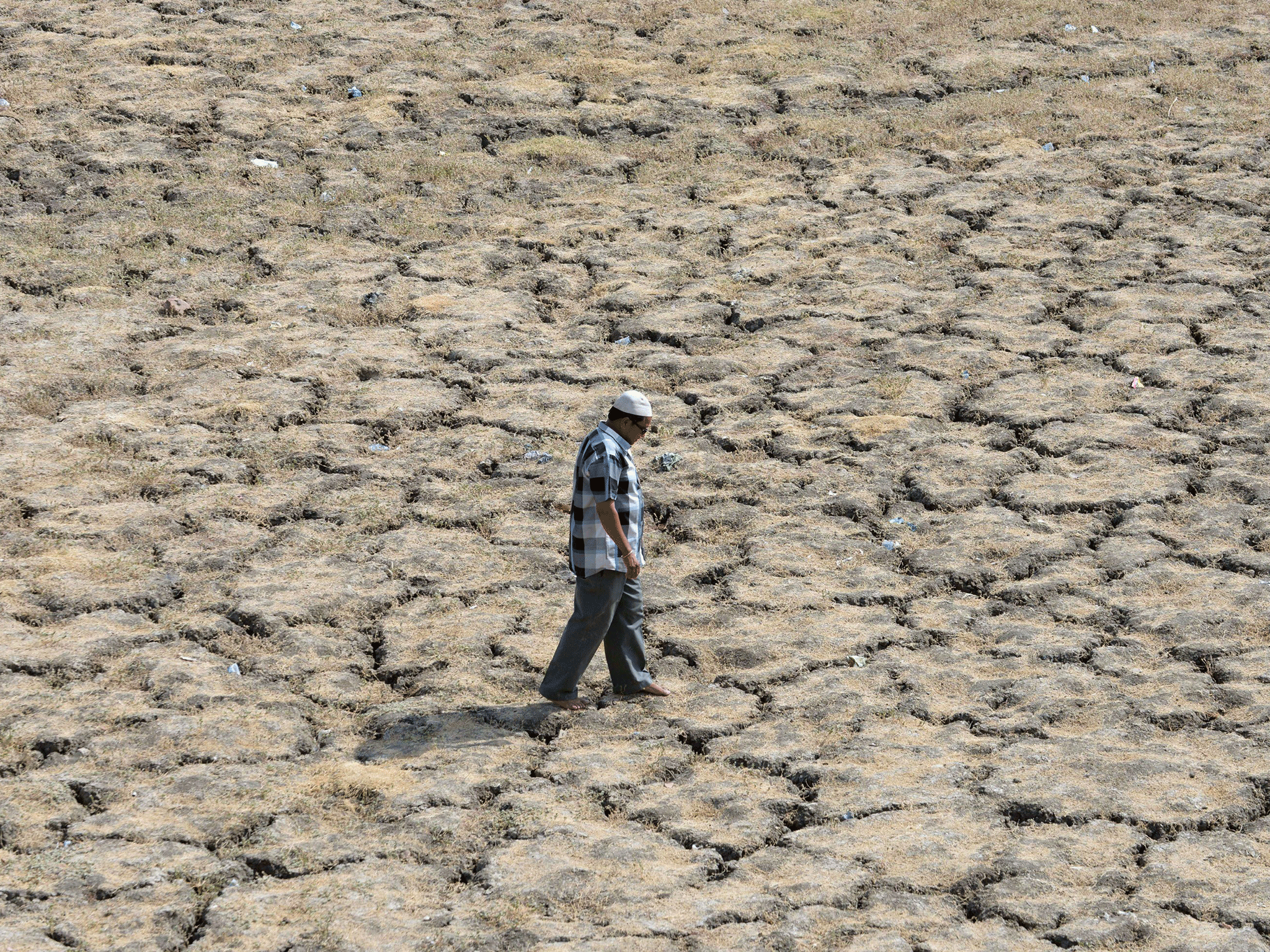India suffered more than 200 heatwave days in 2022 compared to just 36 last year
Number of heatwave days in country jumped more than five-fold in 2022

Your support helps us to tell the story
From reproductive rights to climate change to Big Tech, The Independent is on the ground when the story is developing. Whether it's investigating the financials of Elon Musk's pro-Trump PAC or producing our latest documentary, 'The A Word', which shines a light on the American women fighting for reproductive rights, we know how important it is to parse out the facts from the messaging.
At such a critical moment in US history, we need reporters on the ground. Your donation allows us to keep sending journalists to speak to both sides of the story.
The Independent is trusted by Americans across the entire political spectrum. And unlike many other quality news outlets, we choose not to lock Americans out of our reporting and analysis with paywalls. We believe quality journalism should be available to everyone, paid for by those who can afford it.
Your support makes all the difference.India suffered more than 200 days of heatwaves in the early summer season this year, more than five times what it faced in 2021, government data revealed.
Last year, there were just 36 days of heatwaves, making 2022’s 203 heatwave days the highest number in the country’s recent past, according to India’s earth sciences minister Jitendra Singh.
Several states, such as the neighbouring agrarian regions of Punjab and Haryana, recorded 12 times the number of heatwave days in 2022 compared to last year. In 2021, both states witnessed just two days of heatwaves.
The maximum days of extreme heat were recorded in the Himalayan state of Uttarakhand, which suffered 28 days of heatwaves, followed by desert state Rajasthan at 26, and Punjab and Haryana at 24 each.
India witnessed the early onset of an intense heatwave in March and April which almost entirely eliminated its spring season, leading to a huge impact on agriculture production.
The heatwave this year is known to be the worst in its recorded 122-year history, with neighbouring Pakistan recording the highest worldwide positive temperature anomaly during March.
The India Meteorological Department (IMD) declares a heatwave if the maximum station temperature reaches at least 40C in the plains and at least 30C in hilly areas or if a sudden jump of 6C or above is witnessed.
This year, India witnessed its first heatwave warning in the first half of April with temperatures breaking all previous records.
“India experienced prolonged spells of heatwave during March and April 2022, hence the average maximum temperature of March 2022 had been the highest for All India (33. 1C) and northwest India (30. 7C) and it had been the second highest for central India (35. 2C) as per the data during the period 1901 to 2022,” Dr Singh, the earth sciences minister, was quoted by Indian media outlets as saying.
Such increased intensity and early onset of heat has been directly attributed to the climate crisis which has made heatwaves 30 times more likely in south Asia, according to the World Weather Attribution initiative.
Also read: Climate change made blistering heatwave in India and Pakistan ‘30 times more likely’
A similar phenomenon has gripped large parts of Asia and Europe with the UK recording temperatures around an unprecedented 40C and China and Japan battling blistering heat as well.
The Indian government’s data, which has never gathered heatwave data on a federal level before, reveals how prolonged this phenomenon has become.
State governments usually keep a record for heatwave days, with the national figure of 203 days being calculated by totalling the average number of heatwave days in states during the summer.
“Abnormal temperature events can impose severe physiological stress on the human body as the body operates best within a fairly normal temperature range. There is a marked relationship between human mortality and thermal stress,” Dr Singh said on the impact of increased temperatures.
Also read: ‘Like frogs in a slowly boiling pot’: How India’s heatwave is only set to get worse
A prolonged period of heatwave had devastating impacts on human health and agricultural production in the country with dozens of deaths reported in March and April.
A separate report from Indian Council of Agricultural Research published early in July also revealed crops, fruits, vegetables and animals were hugely impacted during the heat spell in nine states, including the agri-belt states of Punjab, Haryana, Uttar Pradesh, Madhya Pradesh, Bihar and Maharashtra and hilly states of Jammu and Kashmir and Himachal Pradesh.
India, the second largest producer of wheat, had restricted its exports early in May after a shortage due to impact on those crops during the heatwaves, a decision that came amid an existing global grain shortage.
However, the report reveals the heatwave also resulted in poor vegetation and increased pest infestation such as fall armyworm and whitefly attacks, and viral infections in crops and livestocks.
Also read: India warns wheat could go way of Covid vaccines with richer countries hoarding most supplies
The impact was also seen in important horticulture crops like mango, citrus, apples, plum, pomegranate, lemon, cabbage, cauliflower, cucumber, bitter gourd, tomato and okra, the report stated.
The hot weather also impacted milk and egg production by impacting the body temperature of animals, it states.
Join our commenting forum
Join thought-provoking conversations, follow other Independent readers and see their replies
Comments